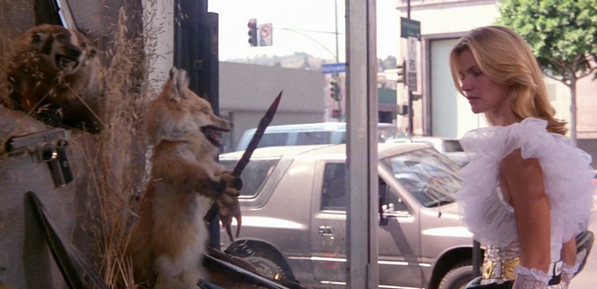Further to this post, in which I sketched out the ideas of the author China Miéville concerning the relationship between the tentacular and the Weird, and the superpositioning of the Weird and the hauntological in monsterology (please read that before you read anything below), here’s my first attempt to look at Doctor Who through that lens.
‘Horror of Fang Rock’ (1977) seems like an obvious first port of call. Set just before the First World War (in other words, in the years of the rise of the semiotic octopus, just before the explosion of the Weird), the Rutan is a tentacular monster, though the tentacles are rarely seen and, on the whole, the creature seems more like a jellyfish (even down to its “affinity with electricity”).

It seems to be a manifestation of the nebulous electrified military modernity that the character Reuben so resents and fears. It seems permeated with technology through its affinity with electricity. It uses the generator, speaks of its ability to shape-shift as a “technique” and leaves bits of its own alien tech all over the place, including a “signal modulator” that chimes thematically with all the concentration on the lighthouse’s wireless telegraph. It also espouses an ideology of empire and militarism, and uses an arrogant tone of snobbery with regards to the Sontarans, which is entirely fitting with the story’s intense focus on class.
(So, there’s an obvious connection here which I’ve made before. ‘Fang Rock’ is set in the early 20th century and features a tentacular monster which seems to carry metaphorical weight to do with imperialism, technology, militarism, global conquest… just the kinds of things that tentacles were being used to signify in the early 20th century political propaganda posters mentioned by Miéville and in my first Skulltopus post. Obviously, this connection is complicated by the fact that the story I’m talking about was written, made and broadcast in 1977, not 1907 or 1917… but the connection is tempting all the same, as a possible example of semiotic drift, of the cultural bric-a-brac of one age hitching a ride into another via that previous age’s representation as a period.)
The story, as a whole, seems more sympathetic to the working class characters than the ‘upper class’ ones. However, the various strands of the drama which explicitly deal with class only arrive at an open and easily comprehensible liberal critique of snobbery, privilege and inequality, albeit a barbed one. The nature of the Rutan threatens to sharpen the critique, though it is ultimately far too contradictory a figure to function as a straightforward metaphor, of either a reactionary or radical nature. The Rutan personifies the oncoming dangers of the twentieth century in a form that associates itself with militarism, military technology, class and imperialism. However, beyond this core of metaphorical specificity, there is a difficulty in pinning down the Rutan.
It cannot be said to metaphorically embody British imperialism, specifically. True, it appears in a story in which British imperialism is referenced… but then so is the imperialism of other nations, albeit via the xenophobia of Reuben, who mentions various nationalities engaged in imperialism at this point, saying that none of them can be trusted.…
Continue Reading


 Happy April 14th to you all. The Shabcast is back once again (slightly more structured and sobre than last time), featuring the return of one of my favourite semi-regular guests, our very own Josh. This episode is a tie-in with
Happy April 14th to you all. The Shabcast is back once again (slightly more structured and sobre than last time), featuring the return of one of my favourite semi-regular guests, our very own Josh. This episode is a tie-in with 



